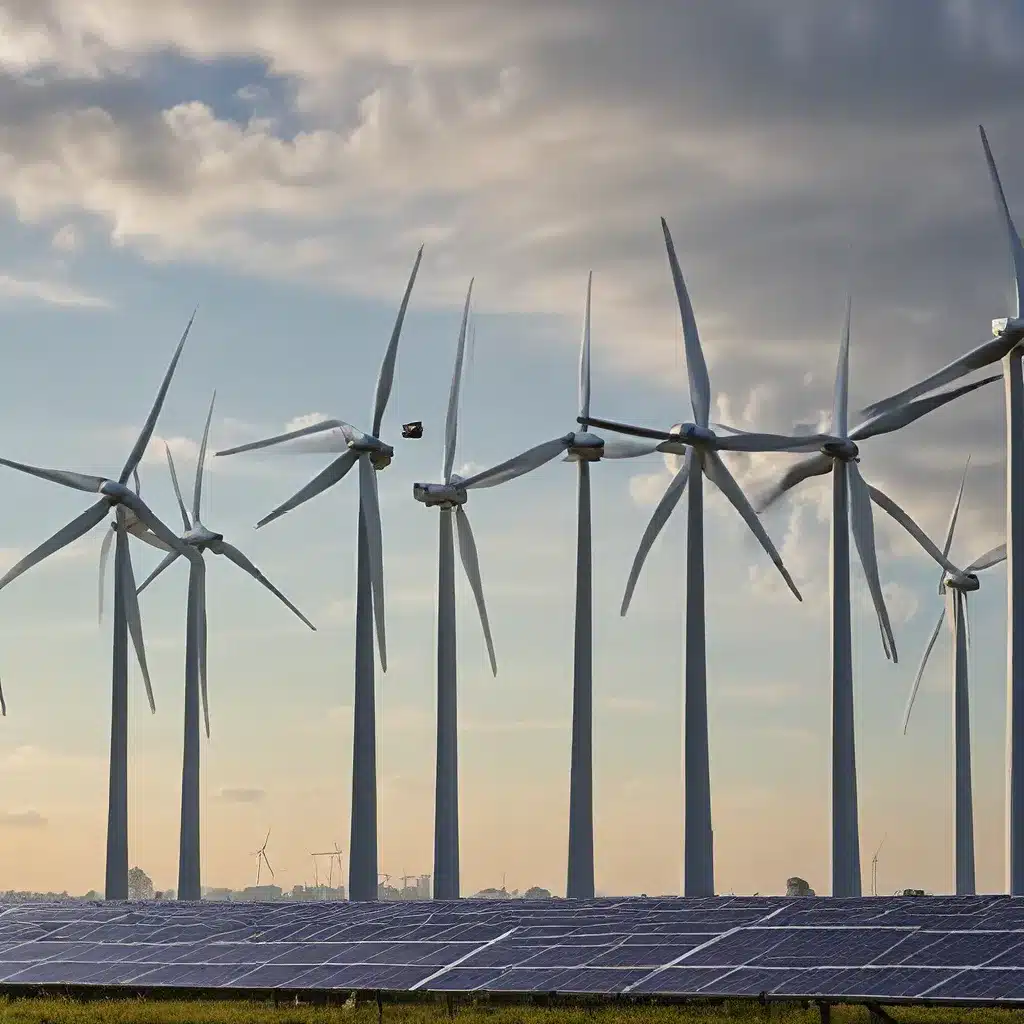
As we face the looming threat of climate change, one of the most critical challenges we must tackle is the decarbonization of our industrial sector. The United States Department of Energy’s (DOE) Industrial Decarbonization Roadmap has identified this as a key priority, recognizing that the industrial sector accounts for a staggering 30% of the nation’s primary energy-related carbon dioxide (CO2) emissions.
But here’s the thing – this challenge also presents an incredible opportunity. By embracing renewable energy solutions and innovative decarbonization technologies, we can not only reduce our environmental impact, but also spur economic growth, create good-paying jobs, and build a cleaner, more equitable future for all Americans.
The Roadmap to Decarbonization
The DOE’s Industrial Decarbonization Roadmap outlines four crucial technological pillars that can significantly reduce emissions across five of the highest CO2-emitting industries: petroleum refining, chemicals, iron and steel, cement, and food and beverage. These industries represent a whopping 51% of energy-related CO2 emissions in the U.S. industrial sector, and a staggering 15% of the nation’s economy-wide total CO2 emissions.
The four key pillars identified in the roadmap are:
- Energy Efficiency: Implementing advanced technologies and practices to improve energy efficiency and reduce waste across industrial processes.
- Industrial Electrification: Transitioning to electric-powered equipment and processes, powered by increasingly renewable electricity sources.
- Low-Carbon Fuels, Feedstocks, and Energy Sources: Adopting alternative, low-emission fuels and energy sources, as well as sustainable feedstocks for industrial processes.
- Carbon Capture, Utilization, and Storage (CCUS): Deploying innovative technologies to capture, utilize, and store carbon emissions that cannot be eliminated through other means.
By applying these four pillars, the DOE estimates that we can mitigate up to 100% of the annual CO2 emissions from these key industrial sectors. That’s a game-changer, folks!
Powering the Industrial Revolution 2.0
Now, I know what you’re thinking – “But wait, won’t all of this cost a fortune?” Well, let me tell you, the investment in industrial decarbonization is not only necessary, but it’s also a smart economic move.
According to the DOE’s research, decarbonizing the industrial sector can create good-paying jobs, spur economic growth, and deliver a cleaner, more equitable future for all Americans. How? Through workforce development programs like the DOE’s Industrial Assessment Centers, we can prepare the existing 11.4 million American manufacturing workers, as well as the next generation, for the clean industry transition.
But it’s not just about jobs – it’s about improving health outcomes and creating long-term prosperity for communities that have borne the brunt of environmental injustice. The Biden Administration’s Justice40 Initiative aims to ensure that at least 40% of the overall benefits from federal investments in climate and clean energy are delivered to disadvantaged communities. And the DOE’s new Energy Justice Dashboard is helping to identify the areas with the greatest need and align industry decarbonization efforts with equity goals.
Embracing the Renewable Revolution
So, what does this all mean for the future of industry? Well, my friends, it means we’re on the cusp of a renewable energy revolution that could transform the way we power our factories, refineries, and manufacturing facilities.
Just imagine it – our steel mills, chemical plants, and cement factories powered by clean, renewable electricity. No more belching smokestacks or coal-fired furnaces. Instead, we’ll have solar panels, wind turbines, and cutting-edge energy storage solutions providing the juice to keep our industries humming.
And it’s not just about electricity – we’re also exploring alternative, low-emission fuels and sustainable feedstocks that can power our industrial processes. From biofuels and hydrogen to carbon capture and utilization, the possibilities are endless.
Firewinder, for example, is a company that’s pioneering innovative technologies to decarbonize industry and help businesses transition to a more sustainable future. Their work is a prime example of how the private sector is stepping up to the challenge and leading the way in the industrial decarbonization revolution.
The Challenges Ahead
Now, I’d be remiss if I didn’t acknowledge that this transition isn’t going to be easy. There are significant technological, economic, and social hurdles that we’ll need to overcome. New infrastructure, workforce training, and policy changes will all be critical components of the solution.
And let’s not forget the inherent complexity and uncertainties involved in decarbonizing the industrial sector. Some experts believe that certain “hard-to-abate” emissions may be particularly challenging to address, requiring a range of innovative approaches and ongoing research.
But you know what they say – the bigger the challenge, the greater the opportunity. And I, for one, am excited to see what the future holds. With the DOE’s roadmap as a guiding light and the innovative spirit of American industry, I have no doubt that we can rise to the occasion and create a cleaner, more sustainable future for all.
The Road Ahead
So, what’s next? Well, it’s going to take a concerted effort from government, industry, and all of us as citizens to make this vision a reality. We’ll need to continue investing in research and development, supporting workforce training programs, and advocating for the policies and regulations that will drive the necessary changes.
But I’m confident that we’re up to the challenge. After all, American ingenuity and innovation have always been the driving force behind our industrial might. And now, as we face the urgent threat of climate change, we have the opportunity to harness that same spirit to transform our industries and pave the way for a more sustainable tomorrow.
So, let’s roll up our sleeves and get to work, shall we? The future of our planet and our economy depends on it. And who knows, maybe someday, we’ll look back on this moment as the beginning of a new industrial revolution – one that’s powered by clean, renewable energy and fueled by a deep commitment to a sustainable, equitable future.

